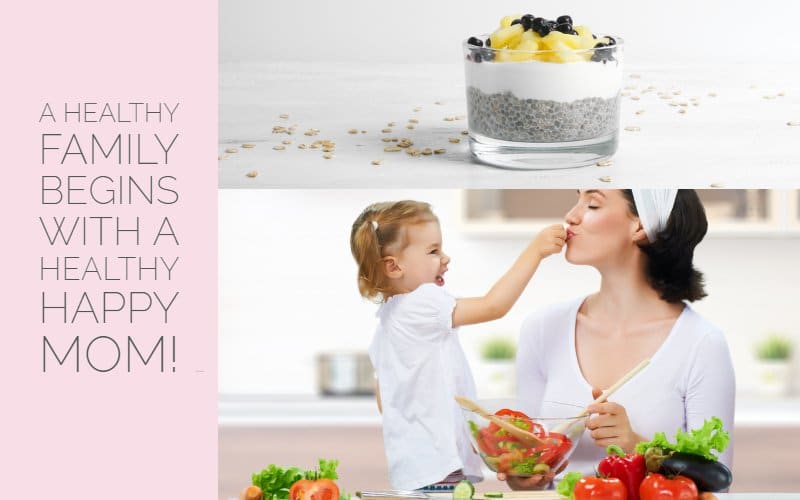How to transition children to a low-carb keto-friendly diet?

How to introduce children to a low carb diet naturally?
So you’ve decided to start a low carb/keto diet – congratulations! There are so many great benefits of going (almost) carb free that it’s natural to want to share the results with friends and family and urge them to do the same.
However, if you’re a parent to young children, it might not be as easy. After all, how do you explain to a six-year-old that cutting carbs will improve their blood sugar levels and reduce inflammation?!
Too many carbs are unhealthy and childhood obesity is on the rise
As tempting as it is to let them continue eating tummy-filling bread, pasta and rice, eventually you will realise that this type of diet is not healthy. It will also be incredibly difficult to juggle preparing two different meals all the time. And with childhood obesity on the rise, it’s even more important for parents to look into their children’s diet carefully and ensure that they are receiving the right nutrients.
Cutting our sugars (also hidden ones) from your child diet is not easy
It’s easy to say you’ll cut out sugar and junk food from your child’s diet, as these are obvious changes that we should all be making anyway, but what about the hidden sugar and nutrition-void ingredients found in everyday, seemingly healthy food?
These days, in a bid to get our kids to eat a ‘proper’ meal we load them up with carbs, which are usually processed and sugar-laden. By switching them to a low carb diet you will be helping them to develop better, healthier eating habits for when they get older.
High-carb foods contain a lot of sugar and little to no nutrients and often cause inflammation
Food that is high in carbs can fill up little tummies very quickly but contain little or no nutrients, so you should avoid them as much as possible. Switching your children to a low carb diet means that they will eat more meat, vegetables, nuts and dairy – all of which are rich in vital nutrients, vitamins, minerals and antioxidants.
Help your children to develop in the best conditions so they have a strong body to combat life
Up until the age of 10 children require as many nutrients and vitamins as possible, as this the stage that they grow and develop the most. This is why it’s so important for them to have good, healthy eating habits, in order to set them up for adulthood. What they eat today will have an impact on their health in the future, so it’s important to take their diet seriously.
Help, my child is thriving on processed junk food
If your child has become accustomed to eating processed junk food don’t worry – it’s never too late to introduce them to a healthier, low-carb diet. Just follow our tips and advice and you will see a great improvement in your child’s overall health. In fact, even their immune system will benefit, which means fewer sniffles and illnesses! Children are incredibly adaptable so this is the best time to get them used to healthy, wholesome food. Remember – you’re setting them up for the future.
Lower the risk of obesity in your children
By following our advice you are also helping to prevent the risk of obesity, diabetes (type 2), tooth decay and many other diseases that many children are suffering from.
Although junk food won’t cause diseases and illness overnight, excessive exposure to processed food that is high in sugar, carbs and bad oils will eventually have an effect on their bodies from the inflammation.
Is a low-carb diet really healthy for my children?
You might have reservations about introducing your children to a low carb diet but they actually don’t need as many carbs as we think they do. A low carb meal will mean that their blood sugar levels remain stable and they avoid energy slumps and mood swings. More importantly, they won’t be as exposed to inflammation and diseases.
As a parent, you need to know how much nutrition is in the food you give your children. Take a chicken sandwich as an example. Most, if not all, of the nutrients, are in the chicken and salad. The bread is simply there to fill their tummies but provides absolutely no nutrition as is full of sugars and grains, which is causing chronic inflammation. By removing the carbs from a child’s meal they won’t get full as quickly, allowing them to enjoy more vegetables, proteins and healthy fats.
Healthy Fats are essential for eye and brain development in your child
Healthy fats are an essential part of a child’s diet. Omega-3, in particular, is essential for eye and brain development and can be found in most oily fish, grass-fed meat and avocados. Healthy fats can also aid tissue development, hormone production and healthy brain function.
Examples of healthy fats include clarified butter, eggs, red meat, oily fish and nuts. If cooking with oil opt for beef fat, olive or coconut oil and avoid seed oils which are highly processed and can cause inflammation.
Processed Oils lead to inflammation
Fried food (or yellow food as I like to call it) has sadly become a staple in most children’s diet. Many kids’ meals will contain some type of fried food like chips or nuggets and the oil used to cook them are just as unhealthy – if not more. Highly processed seed oils like canola oil or sunflower oil can lead to inflammation, which is the root cause of most modern diseases If these oils are in your home I urge you to swap them for olive oil, coconut oil or avocado oil. And if you must give your children ‘yellow’ food, skip the frying and try to oven cook them instead.
Fruit, fruit juices and veggies
Fruits and vegetables contain carbs but these are better for your children than the processed options. Most of them are packed with vitamins, antioxidants and fibre – all essential for a child’s healthy diet. However, fruits and vegetables are not equal in terms of nutrition and some are better for us than others.
For example, most fruits contain high amounts of fructose, a naturally occurring sugar. Fruits that are lower in sugar include berries, which should be given no more than twice a day. Tropical fruits, which contain more fructose, should be eaten less and dried fruit should be avoided completely.
Fruit juices are also deceptively unhealthy and most of them contain just as much sugar as a fizzy can of pop! Remember – a glass of orange juice is not the same as eating six oranges, it’s the equivalent of consuming the sugar in six oranges. When you consider this it’s best to stick to water.
Wholegrains
You’ll be forgiven for assuming a wholegrain option of your favourite carb is okay, but these are still incredibly processed and contain little or no nutrients. Wheat and grains are hard to avoid and can be found in most food, which means we are constantly consuming them. This is a leading cause of inflammation and high blood sugar levels. By cutting out the grains in your child’s diet they will have more of an appetite for vegetables and proteins.
Now that you are aware of the hidden dangers of a high carb diet, here are some simple tips to help your child enjoy a more nutritious, low carb diet.
Transition your children to a low-carb diet will take time
You might be itching to throw out all of your processed food, but drastic changes can cause children to feel confused and frustrated. Going ‘cold turkey’ might work in some instances, but when you’re trying to change a child’s eating habits you need to be sensitive to their needs. Most of them won’t understand why their beloved sugary meals have disappeared overnight so you need to make the change a gradual one.
Start slowly by removing one or two items from their usual meal. You could start by replacing those sugar-laden fruit juices with water. Depending on how used to your child is to their sugary drink this might take a week or so to implement – but persevere! You may experience some discord the first few times that they’re greeted with water instead of juice, but after a few days the transition will be easier and soon your child will become accustomed to having water with her meal.
Once you’ve cut back on the more obvious junk food like sweets and biscuits you can start to cut back on the amount of bread, rice and pasta your child eats by changing the portions.
Simply serve less pasta and more chicken and veggies at dinner time and watch your child’s reaction. They might insist on more pasta, but if it’s not available to fill their tummies they will eventually eat more of the vegetables and protein instead.
It will be difficult at first but don’t give in and remember the long-term health benefits of why you’re doing this.
Keep it simple
You might be tempted to start cooking elaborate meals to make up for the lack of carbs in your child’s meals but this won’t be sustainable in the long run and the pressure could lead you back to old habits. Take breakfast for instance. This is one meal that you won’t always have the energy for so save the snazzy veggie-packed omelettes for lazy weekends. Instead, offer your child a bowl of fruit and yoghurt or some avocado slices and a smoothie. If your kids still insist on cereal (kicking this sugary habit won’t be easy!) try negotiating it as a ‘treat’ breakfast that they can have once in a while. Then, as each box finishes just stop replacing them.
Bye bye bread
Ahh, bread – a major food group in nearly all children’s diet, yet so unhealthy and filled with absolutely no nutritional value! It might be tricky to cut bread out of your child’s diet completely as they probably have it in their lunchboxes every day. Again, gradual changes are key, so start by having ‘bread-free’ days or swap it for a thinner loaf or wrap. Did you know that there are many healthy Paleo and Keto mix doughs available that are very easy to prepare?
Get the kids involved
Sometimes we don’t give our kids enough credit. Eventually, they will notice the subtle changes being made to their diet and may even start to resist and revolt! Avoid this by involving them from the beginning. If they are old enough explain to them that eating healthy is important and essential for them to grow and become strong. Also, get them involved in the meal planning process so that they can pick meals and look forward to eating them.
Scour through Pinterest boards and cookbooks together and ask them to point out what they like the look of. You could even get them to write out the weekly menu and practice their writing skills at the same time! Or make it into a fun project by getting them to compile their own mini-cookbook and print out recipes.
Finally, take them to the market and get them to touch and smell the fresh produce (not the meat or fish though!) and let them pick the fruit and veggies that they like the look of.
How to handle a picky eater
Parents assume their child is a picky eater, but in reality, they simply do not have the same attention span to eat meals like an adult. Offer more variety at meal times by including small portions of meat/fish, vegetables and dairy. You could even use a plate with compartments and make it into a game.
Chances are the child who is labelled a picky eater is allowed to eat whatever they like, as long as they eat SOMETHING! This is a mistake that parents make from the beginning because it teaches the child that if they continue to resist healthy meals you will give up and give them whatever junk food they want. You may even offer snacks in between to make up for a missed meal, not realising that this will only fill them up before the next meal. It’s a vicious circle!
Avoid ‘quick-fixes’ when feeding a picky child. Instead, let them wait for the next meal to eat so that they are hungry enough to finish (or at least try) what’s in front of them. Once you’ve done this a few times the child will start to realise that skipping a meal doesn’t equate to a yummy treat.
For a picky eater, the issue may also be about control and not being able to choose what they want to eat. Look at the point above and involve your child as much as possible in the meal planning. Another trick is to allow them to leave one piece of vegetable on their plate. They won’t even realise that there are extra veggies to make up for this, but they will feel more in control.
Organisation is key
One of the main reasons why our children eat so much junk food is because it’s so convenient. Ready meals and packaged food is easy to prepare, especially if you’re working or have had a long day.
Not all of us have enough time to cook healthy meals from scratch, so don’t put unrealistic expectations on yourself. Meal prepping is key to ensuring you and your family aren’t reaching for the takeaway menu every Friday night (although the occasional treat is fine).
Begin by meal planning every Sunday or Saturday. Once you know what food you will be eating that week you can start preparing as much as possible in advance. Keep boiled eggs in the fridge as a quick snack and pre-cut any veggies needed for the week. Batch cook as much as possible. For example, a bolognese recipe can be doubled, with half of it frozen for the week after.
Low carb meal planning for kids
Low-carb breakfast ideas for kids
Boiled eggs
Avocado slices
Omelettes
Scrambled eggs and sausages/bacon
Yoghurt and fruit
Keto or Paleo pancakes or waffles
Low-carb Lunchbox ideas for kids
Mini-quiches
Tuna and sweetcorn salad
Scotch eggs
Ham rolls
Cheese stuffed peppers
Keto or Paleo sandwiches
Low-carbs Snacks for kids
Veggie sticks – cucumbers, carrots and peppers paired with homemade dips
Apple slices with nut butter – almond and peanut butter work a treat
Smoothies – a great way to sneak in some veggies, especially spinach, avocado and kale
Cheese sticks or cubes
Mixed nuts and berries
Flavoured water – a great way to gradually reduce a child’s dependence on sugary fruit juices
Pep talk – don’t stress yourself out with switching your child’s diet to low carb. Meals needn’t be complicated or fussy – just stick to fresh ingredients and keep it as simple as possible. The key is to stop turning to processed, packaged food everytime and learning to stop relying on them so much. More importantly, remember that children require a varied diet so don’t ever cut carbs out completely.
Checklist for a transition to a low-carb diet for kids
- Throw out the junk food – if it’s not in the house your kids can’t eat them. Simple.
- Save the takeaway for special occasions only
- Increase the amount of omega 3 in your child’s diet by feeding them more oily fish, avocado, nuts and organic meat
- Cook with your kids and get them involved in the meal planning process so that they feel empowered.
- Ensure to have all ingredients at home ready and available
- Avoid buying unhealthy carbs so that there is no temptation
- Entice with a small reward
Kids-keto-swap tips
Some interesting books to make your kids succeed in Keto-world
- The Paleo Mom is definitely a book worth reading
- Keto Kid, for helping your kid succeed on the ketogenic diet
- Lunchbox recipes to make kids happy
Some guilty free snacks
Some easy kids-proof recipes
https://sandra-bloom.com/easy-keto-pancake-recipe/
https://sandra-bloom.com/keto-friendly-waffles-lazy-weekend-morning/
https://sandra-bloom.com/guilt-free-paleo-and-keto-friendly-chocolate-truffles-recipe/
https://sandra-bloom.com/lamb-meatballs-recipe/
https://sandra-bloom.com/gluten-free-tasty-keto-friendly-meatloaf-recipe/
Empowering others to live healthy, eat low carb and enjoy a healthy ketogenic lifestyle
I hope you like this post about how to transition your kids to a low-carb diet. If you would like to learn more about the keto diet ensure to check out our recipes and other pages of this anti-ageing wellness platform.
I changed the way I eat in 2011 when I was diagnosed with hypothyroidism, chronic fatigue and adrenal fatigue, conditions where the thyroid is affected. I had no energy, was exhausted, desperate, and my weight had sky-rocketed.
Because of that, I decided to ditch sugars, processed foods, grains, dairy and toxic chemicals. And step-by-step, I introduced a whole-foods-based (first Paleo) and later an AIP (autoimmune protocol) friendly ketogenic approach to food which gave me my life, vitality, happiness and energy back!
Now, through my holistic wellness books and anti-ageing health platform, I want to empower people around the world do the same and regain their health, hair, life, vitality and beauty!
Let me help you right now!
Receive YOUR Welcome Kit that includes a wide range of topics, from simple and easy healthy brain recipes to clean living, ditching toxic chemicals with loads of practical advice that you can implement immediately
.




